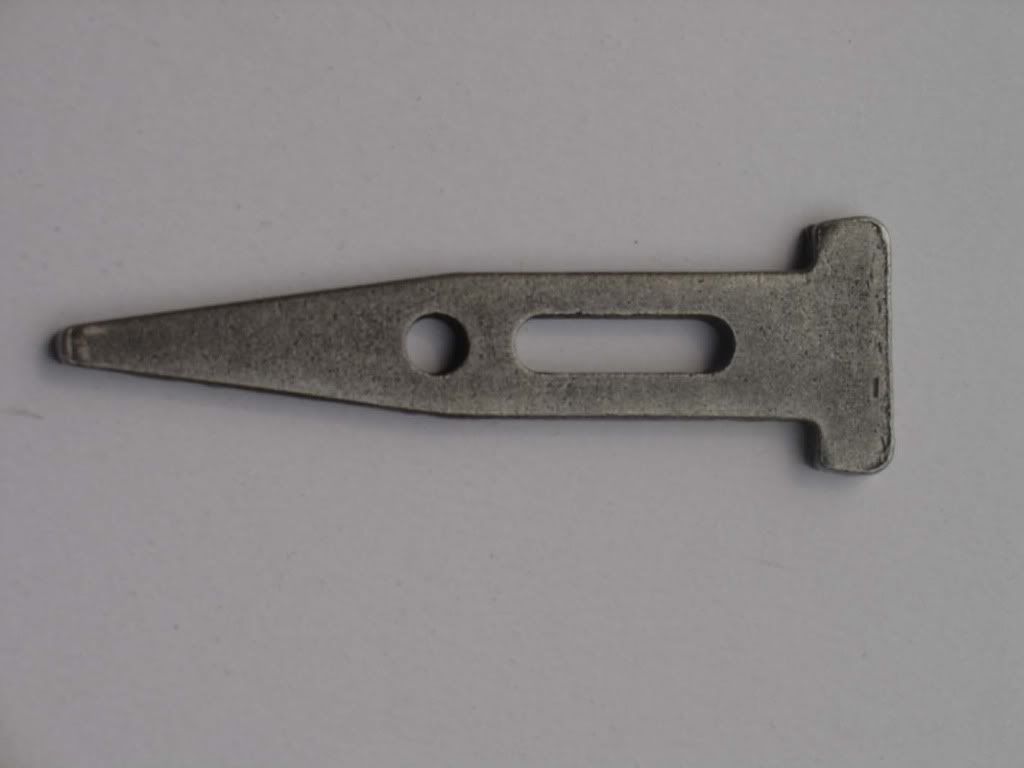Dear Variable Wedge,
You change, shift, and fluctuate through the passing of time. Commencing on a linear path, your form growing all the while, you reach out towards the sky. On this series of steps, I hop into the abyss. While many simplify you into a simple tool: one of six elementary instruments conceived by man, you serve a greater purpose than that in my eyes. You hold, split, and lift time: all at the same moment, allowing me to view the depths of my life. Then, when it appears that I have figured you out, you vary yet again, showing me something new. Angle after angle, your panoramic nature brings new insight to my soul.
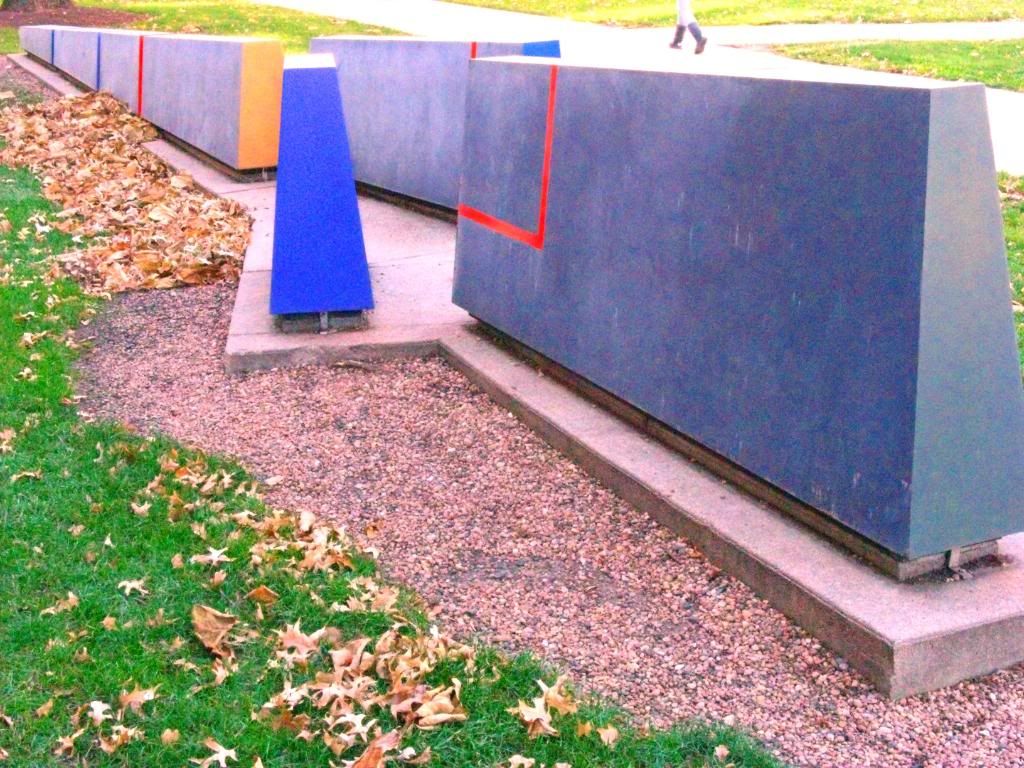 As with stepping-stones, each builds off of the last, with the most important information residing in the first step. As your first step, I notice your form: a wedge. Your positive mass takes up a slice of space in the continuous circle of time. Geometric and progressive: you are no doubt marked by the fingerprint of mankind. He has left you inorganic, in the shape of a tool. But perhaps you have left your mark on him as well. For, this evolution of a trapezoid reminds me of someone close, someone dear. At one point, a younger me, but upon further reflection, maybe my older self. Alas, like your steps I see continuous growth. A tool you are: with the ability to peer into the depths of my heart. At first my dreams appear linear, but then again, they are in a constant state of variability as well. Changing, shifting and fluctuating.
As with stepping-stones, each builds off of the last, with the most important information residing in the first step. As your first step, I notice your form: a wedge. Your positive mass takes up a slice of space in the continuous circle of time. Geometric and progressive: you are no doubt marked by the fingerprint of mankind. He has left you inorganic, in the shape of a tool. But perhaps you have left your mark on him as well. For, this evolution of a trapezoid reminds me of someone close, someone dear. At one point, a younger me, but upon further reflection, maybe my older self. Alas, like your steps I see continuous growth. A tool you are: with the ability to peer into the depths of my heart. At first my dreams appear linear, but then again, they are in a constant state of variability as well. Changing, shifting and fluctuating.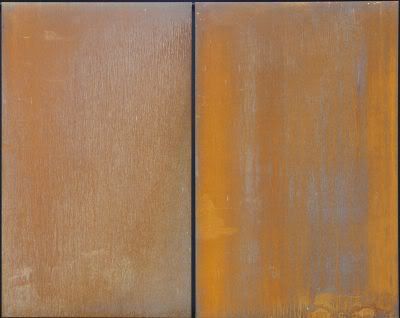
Evolving too is the material you are made from. As a second stepping-stone, your cor-ten steel skin is rigid, yet vulnerable to the elements. Or is it? While it appears to age over time, polished to rust, one assumes that you will eventually become too weak to hold yourself up. Surprise them you will, however, as this aging serves only to strengthen you more. For with time and rust comes a more stable chemistry. As with life, we bleed and scar from wounds, hurt from broken bones. However, upon reconstruction, these bones and scars only serve to make us stronger.
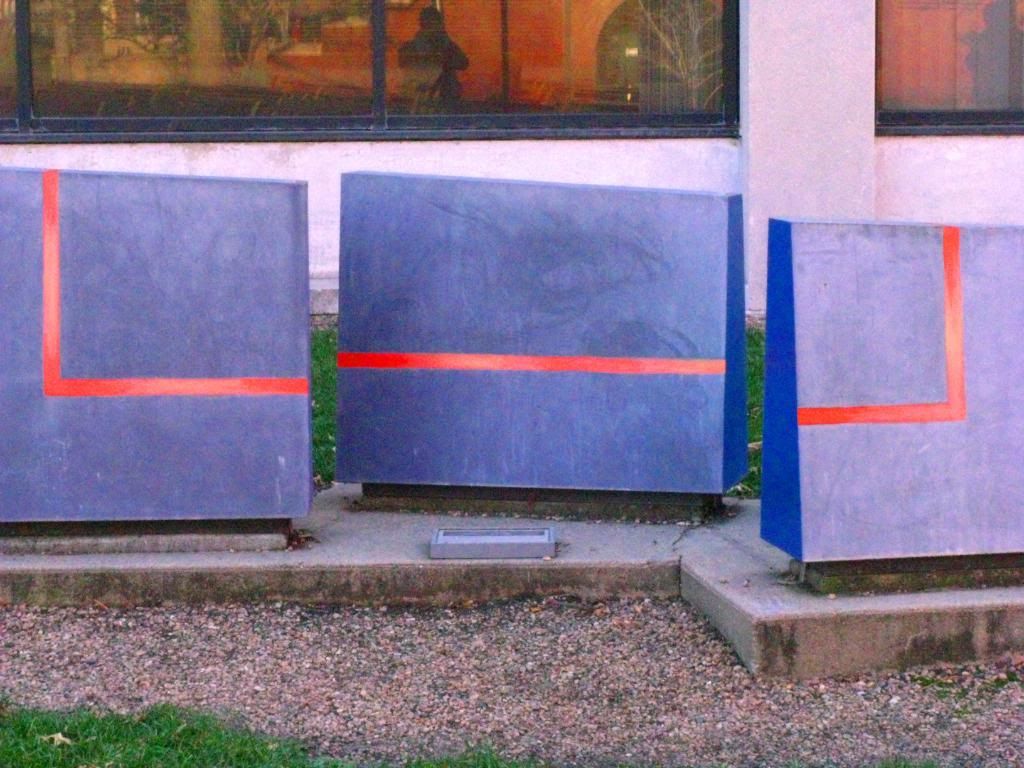 This brings me to your third stepping stone, Variable Wedge; which is not separated much from the first two. I can see your hues of experience progressing through the years. Visible but not overwhelming, these colors exist. Blue then violet. Red then yellow. As they progress, they become lighter in value. But does this build upon the concepts of the first step? Do these separate aspects mesh together, or are they unrelated? From small to large, dark to light, you contain a pattern too coincidental for me to ignore. Thus, as you pose the question as to what the colors of your core being represent, I give you my answer. For when I was a young boy, I was both small in stature and weak in knowledge, as though I was a small trapezoid, somewhat confused and uncomfortable when exposed to the elements of the world. However, as both my strength and knowledge grew, so did my comfort level. From dark blue to a brighter yellow hue, I became more outgoing, mature, and bold with my actions.
This brings me to your third stepping stone, Variable Wedge; which is not separated much from the first two. I can see your hues of experience progressing through the years. Visible but not overwhelming, these colors exist. Blue then violet. Red then yellow. As they progress, they become lighter in value. But does this build upon the concepts of the first step? Do these separate aspects mesh together, or are they unrelated? From small to large, dark to light, you contain a pattern too coincidental for me to ignore. Thus, as you pose the question as to what the colors of your core being represent, I give you my answer. For when I was a young boy, I was both small in stature and weak in knowledge, as though I was a small trapezoid, somewhat confused and uncomfortable when exposed to the elements of the world. However, as both my strength and knowledge grew, so did my comfort level. From dark blue to a brighter yellow hue, I became more outgoing, mature, and bold with my actions.
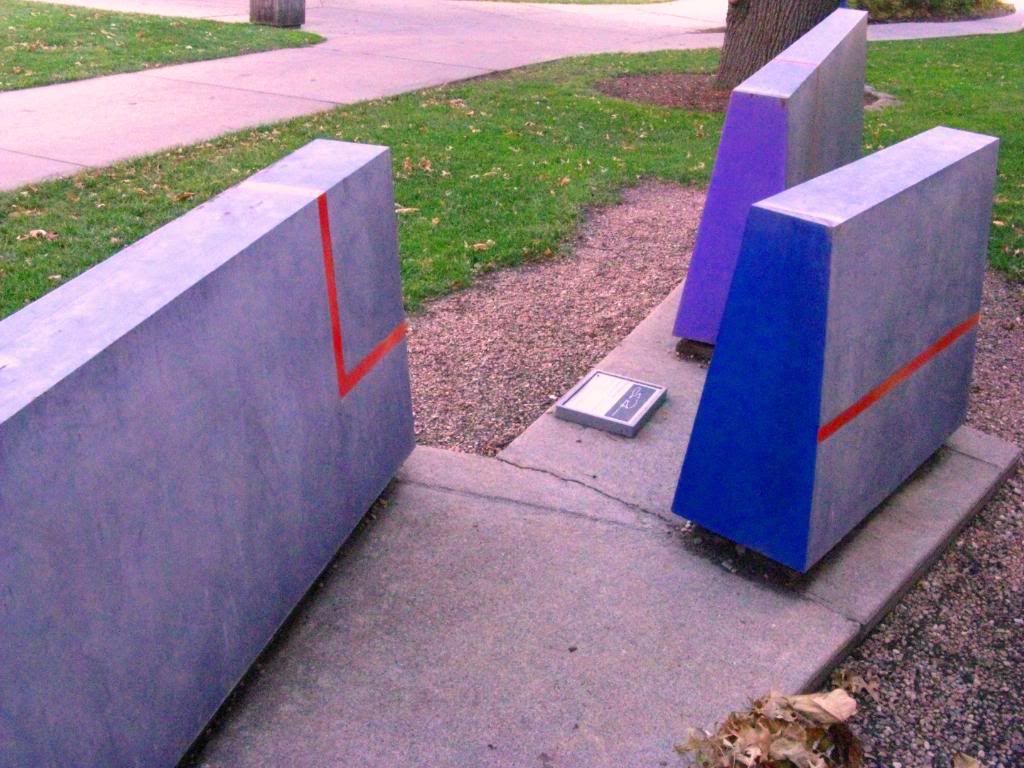 Hold on a moment, though. From dark to light, your pattern holds strong. Why then, do you resort back to blue and violet while you are still growing? Left and then right, your form sways back and forth: diverging once again from the norm you have followed. Now, my good friend Variable, I question what I have constructed in this moment. You have wedged this problem into my stream of consciousness, splitting and testing what I thought I knew. For when life is easy, and things are going as planned, confidence is gained and boldness harvested. Ultimately, however, something knocks you down as you stray from what you were comfortable with. Inevitably, feelings of your inexperienced youth emerge once again, a sort of regression. Eventually, however, you proceed onwards, gaining confidence and maturing once again. In the process you also gain knowledge about yourself, as well as what the regression of blue and violet hues on a sculpture mean.
Hold on a moment, though. From dark to light, your pattern holds strong. Why then, do you resort back to blue and violet while you are still growing? Left and then right, your form sways back and forth: diverging once again from the norm you have followed. Now, my good friend Variable, I question what I have constructed in this moment. You have wedged this problem into my stream of consciousness, splitting and testing what I thought I knew. For when life is easy, and things are going as planned, confidence is gained and boldness harvested. Ultimately, however, something knocks you down as you stray from what you were comfortable with. Inevitably, feelings of your inexperienced youth emerge once again, a sort of regression. Eventually, however, you proceed onwards, gaining confidence and maturing once again. In the process you also gain knowledge about yourself, as well as what the regression of blue and violet hues on a sculpture mean.
This conflict and resolution were the fourth and fifth stepping-stones, adding to your character. And with these additions, I thought I had finally figured out our relationship. As is evidenced by many things in this world, however, your being is much more complex than simply your obvious features. As a wedge has many uses and is constantly changing, so too are the elements that define you. While your positive form occupies a slice of space and contains billions of molecules, it does not even occupy a billionth of a fraction of the universe. Surrounding you are, thus, an infinite number of other variables, each of which contribute to your ever-changing being. While they serve to define the edges and elements of your form, they also interact with the wavelengths of your colors, and the toughness of your skin. After each of these copious variables has taken its effect in a moment in time, your being is essentially calculated, as is mine as well as everyone else’s. With each of your passing sections, steel turns to air, and air tapers to steel: positive and negative wedge interacting and interlocking, providing a visual sense of what you are.
These other forms of wedges exist in a manner in which they become the sixth stone to step on, further establishing your character. The negative space between your various sections juxtaposes the finite and definable qualities of your positive form. These are your wedges that are truly variable, constantly changing. At one moment, an insect dissects this space, while in the next it is filled with decomposing leaves from trees. I believe this is one of the more complicated aspects of you, Variable, and I don’t intend to pretend I know everything about it.
In continuing with this sort of thought, the seventh stone is more about the space that surrounds you. Essential to any being are their orientation among the elements in their environment. In your case, there are two buildings that run parallel to your body, which in turn represent professional occupations: those of a musician and an architect. Even broader than this is the fact that you are on a university campus: a place where dreams are formed, and futures molded. Variability is synonymous with this collegiate atmosphere, as students’ lives are constantly shifting. From a change in major, to a flux in ones beliefs, it is a time of self-identification. Also important is your orientation in such a way that you grow as you make your way Eastward. I believe that you hint that one way we grow is to reconnect with our innermost being, which is formed when we were little. Reconnecting with our roots is one way that students mature.
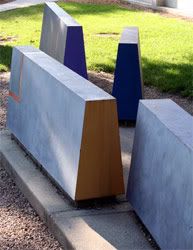 As we have spent these past weeks together, Variable, each of your encompassing elements has suggested much to me. Your form, material, color, conflict and resolution of pattern, negative space, and environment each play a role in your story. They build upon one another, adding layers of insight reaching to the heavens. So just as you will continue to change, shift, and fluctuate, I have realized that we are similar in that regard. For now, however, I wish to become part of your variability; for this is our common thread.
As we have spent these past weeks together, Variable, each of your encompassing elements has suggested much to me. Your form, material, color, conflict and resolution of pattern, negative space, and environment each play a role in your story. They build upon one another, adding layers of insight reaching to the heavens. So just as you will continue to change, shift, and fluctuate, I have realized that we are similar in that regard. For now, however, I wish to become part of your variability; for this is our common thread.
Thanks so much,
Joey Laughlin
